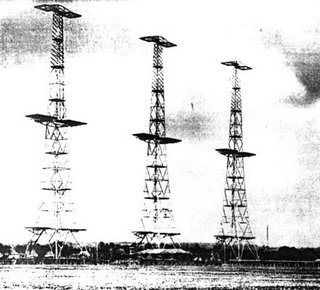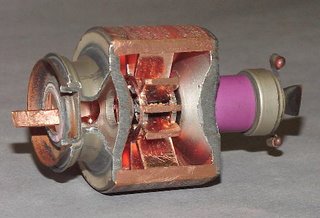Flightdeck Friday — The History of AEW
Ed note: In 1981 a smart-a$$ LTJG wrote a note to the editor of The Hook bemoaning the lack of VAW articles. Sensing an opportunity, the then editor, Bob Lawson, wrote back challenging the young jg to pick up quill and scroll and “write something!†The gauntlet was accepted and the first comprehensive history of VAW appeared in The Hook’s Summer 1983 issue – and has been roundly plagiarized since in a variety of squadron histories. Over time, your humble scribe has continued research, always on the hunt for original material to add to the story. Beginning with this week’s Flightdeck Friday, I will begin updating that history. Rather than just focusing on a particular platform, this series will endeavor to look at the system as a whole – platform, tactics, threat environment, etc. such that the reader gains an appreciation for the evolution and deployment of this vital capability. Read, enjoy and provide feedback as you see fit – also looking for good sea stories! – SJS
< ?xml:namespace prefix = o />
There is an arrogance permeating our culture such that it is widely believed that the (fill in the blank with the latest technological wonder) is (1) fairly recent in invention and (2) anything that preceded was hopelessly crude and unsophisticated, if it even existed or could have been possibly conceived in an earlier age. As serious students of history, particularly technological history will assert though, the degree of inventiveness and technical complexity evidenced by our predecessors is indeed extraordinary, especially when put in context of the extent of knowledge in a particular field at the time. The story of airborne radar, and airborne early warning radar in particular, is one of the signatory lessons in this vein.
Radar was not unknown in the early days of WWII – indeed the story of how the CHAIN HOME radar stations, linked to coordination centers who in turn guided and directed Leigh-Mallory’s “big wing†fighter tactics is well known. The US Navy was already working to incorporate radar into its surface ships to permit gunnery
radar stations, linked to coordination centers who in turn guided and directed Leigh-Mallory’s “big wing†fighter tactics is well known. The US Navy was already working to incorporate radar into its surface ships to permit gunnery  under all weather/day-night conditions and meet navigational needs. Radar “expanded the battle space†(in the current parlance) but soon encountered problems – not the least of which was the curvature of the earth and the haven it provided to low flying aircraft. The solution, raise the radar antenna by mounting the radar to an aircraft, was fraught with a number of challenges.
under all weather/day-night conditions and meet navigational needs. Radar “expanded the battle space†(in the current parlance) but soon encountered problems – not the least of which was the curvature of the earth and the haven it provided to low flying aircraft. The solution, raise the radar antenna by mounting the radar to an aircraft, was fraught with a number of challenges.
Chief among those hurdles was the radar wave itself. The early search radars were low frequency (HF-band) with a long PRF (pulse repetition frequency) which provided the necessary range and were generally easy to generate. The down side was the large antennas required. Even later radars with parabolic antennas and operating at higher frequencies still tended to be very large. What would be needed for airborne radar was microwave radar that provided high power with a smaller antenna. Simple in thought, difficult in execution. Yet efforts were underway on both sides of the < ?xml:namespace prefix = st1 />
frequency (HF-band) with a long PRF (pulse repetition frequency) which provided the necessary range and were generally easy to generate. The down side was the large antennas required. Even later radars with parabolic antennas and operating at higher frequencies still tended to be very large. What would be needed for airborne radar was microwave radar that provided high power with a smaller antenna. Simple in thought, difficult in execution. Yet efforts were underway on both sides of the < ?xml:namespace prefix = st1 />
Simple two-pole magnetrons were developed in the 1920s by Albert Hull at General  Electric’s Research Laboratories (Schenectady, New York), as an outgrowth of his work on the magnetic control of vacuum tubes in an attempt to work around the patents held by Lee DeForest on electrostatic control. The two-pole magnetron, also known as a split-anode magnetron, had relatively low efficiency. The cavity version (properly referred to as a resonant-cavity magnetron), the path British scientists and engineers were working, proved to be far more useful.
Electric’s Research Laboratories (Schenectady, New York), as an outgrowth of his work on the magnetic control of vacuum tubes in an attempt to work around the patents held by Lee DeForest on electrostatic control. The two-pole magnetron, also known as a split-anode magnetron, had relatively low efficiency. The cavity version (properly referred to as a resonant-cavity magnetron), the path British scientists and engineers were working, proved to be far more useful.
In 1940, at the
In the meantime, back in the
By the end of December 1943 even with the successful extension of range to 100 nm, however, there was no decision to proceed with production of the AN/APS-14 and there was movement to cancel the project. The following month though, the Navy proposed to develop an AEW system that had as part of the set-up, a high-power relay teamed with a high-power, microwave radar (enabled by the British magnetron). MIT-RL was awarded the task and Project Cadillac was underway.
To Be Continued

One Comment
Comments are closed.